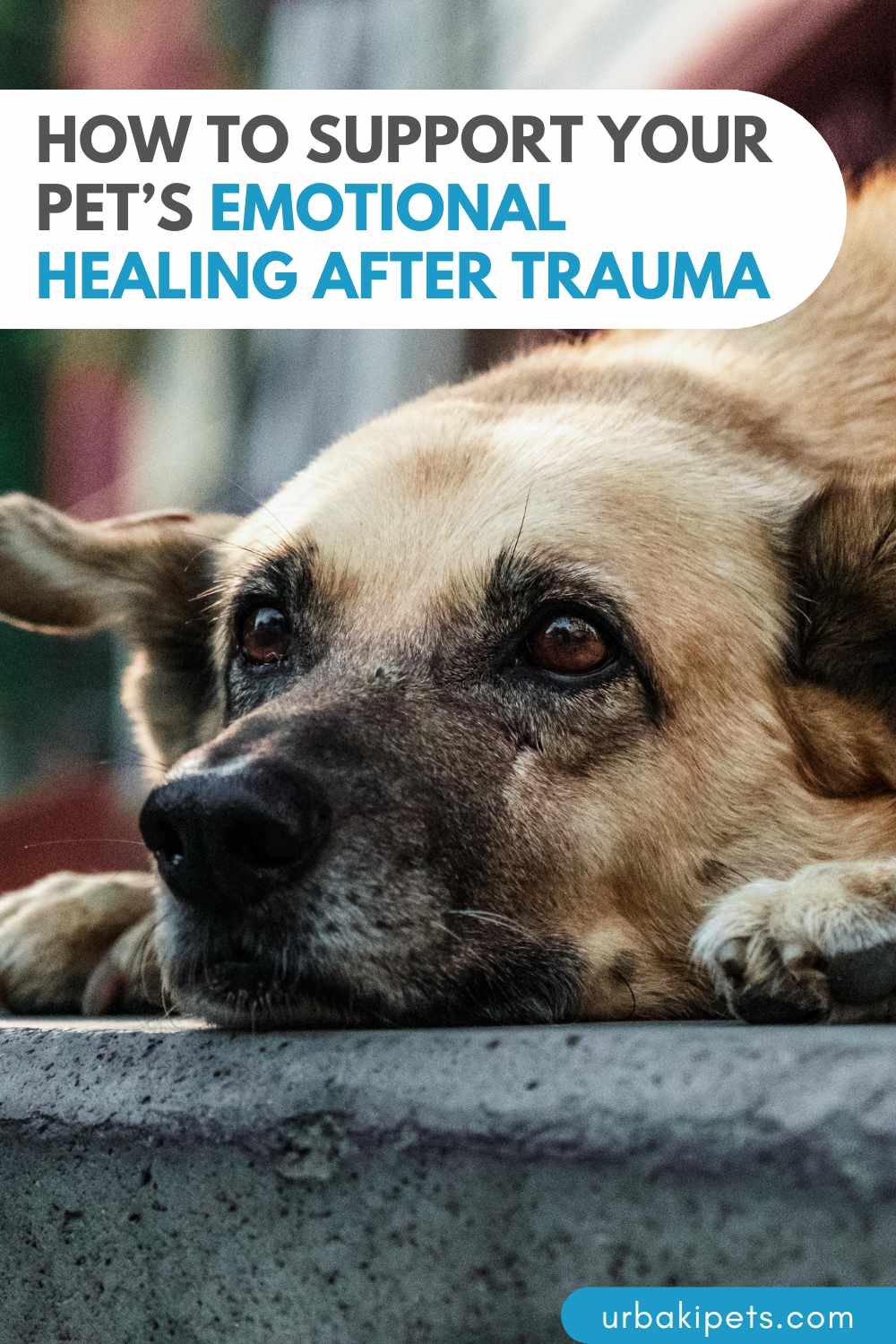How to Support Your Pet’s Emotional Healing after Trauma

Animals, just like people, can carry the invisible weight of past experiences. Whether it’s due to abandonment, abuse, natural disasters, or a life-altering event like an injury or rehoming, pets often react emotionally to trauma in ways that may not be obvious at first glance.
Their behavior might shift, their routines may change, or they might seem withdrawn. For pet owners, this can be heartbreaking, but it’s also an opportunity to provide steady, healing support.
Helping a pet recover emotionally doesn’t come with a step-by-step manual, but with patience, consistency, and compassion, you can play a vital role in restoring their sense of safety.
Emotional healing takes time, and no two animals will respond in the same way. Understanding their signals and gently adjusting your approach can bring remarkable results.
Creating a Safe and Predictable Environment
A pet recovering from trauma needs more than food and shelter—they need an environment that feels consistently safe and stable.
Loud noises, abrupt movements, or unfamiliar smells may cause distress, especially during the early stages of recovery.
Establish a quiet, dedicated area where your pet can retreat when they feel overwhelmed. This might be a cozy corner with familiar bedding, a soft crate, or a warm perch by the window.
Use the same bedding, toys, and layout daily. Over time, familiarity becomes comfort.
Routines are powerful healing tools. Feed your pet at the same time each day, go for walks on a regular schedule, and keep interactions calm and predictable.
A sense of control over their surroundings can help rebuild lost confidence.

Reading the Signs of Emotional Distress
Every pet expresses discomfort differently. Some withdraw and avoid contact, others may act out with aggression, restlessness, or compulsive behaviors like over-grooming or pacing. These responses aren’t signs of misbehavior—they’re coping mechanisms.
Dogs might tremble, bark excessively, or refuse to eat. Cats may hide for long periods, hiss unexpectedly, or stop using the litter box. Birds can pluck their feathers.
Even small animals like rabbits or guinea pigs may become unusually still or vocalize when approached.
Being observant without overreacting is key. Notice patterns in your pet’s behavior—what situations trigger their anxiety, how long episodes last, and what seems to calm them. This knowledge allows you to adjust your environment or interaction style with greater empathy.
Offering Comfort Without Pushing Boundaries
It’s natural to want to cuddle and reassure your pet when they’re distressed, but sometimes too much attention can feel overwhelming. Instead, offer your presence without forcing contact. Sit nearby. Speak softly. Allow them to come to you on their terms.
If your pet seeks closeness, provide gentle touch and reassuring words. If they shy away, respect that space.
Trust builds slowly, and small gestures—like offering a treat with an open hand or simply being near without demanding interaction—can have a significant impact.
For some animals, enrichment activities can serve as both a distraction and a comfort. Puzzle toys, snuffle mats, or gentle games stimulate the mind and allow the pet to engage on their terms.

Rebuilding Confidence Through Positive Reinforcement
Encouragement plays a key role in emotional recovery. Instead of correcting fearful or anxious behavior, focus on celebrating small successes.
If your dog ventures a little farther from their safe space or your cat begins exploring a new room, offer calm praise or a treat.
Positive reinforcement strengthens the bond between you and your pet and teaches them that good things happen when they feel brave. Avoid punishment or harsh discipline, which can deepen mistrust and stall progress.
Training sessions—even simple ones—can help re-establish communication and build confidence. Use a gentle tone, short sessions, and rewards that are meaningful to your pet.
These moments become stepping stones to healing.
Supporting Recovery with Enrichment and Routine
Traumatized pets often benefit from a structured routine that gently introduces new experiences over time. Start with basic needs—consistent meals, sleep, and bathroom habits—before expanding to new stimuli.
Mental and sensory enrichment can help stimulate curiosity and rebuild engagement.
For example, scent-based activities, soft background music, or supervised outdoor exploration can reawaken interest in the world around them.
Gradually introducing new experiences in a low-pressure way helps pets adapt without becoming overwhelmed. The goal isn’t to erase fear, but to help them feel supported while facing it.

Seeking Professional Help When Needed
While love and patience go a long way, some pets need more specialized support to fully recover. A veterinarian should be your first stop if you notice significant behavioral changes, appetite loss, or physical symptoms of stress.
Behaviorists or certified animal trainers who specialize in trauma recovery can also be valuable resources.
They offer insight into complex behaviors and can provide training plans that align with your pet’s emotional needs.
In some cases, calming supplements or short-term medication may be recommended as part of a broader healing plan. These are tools—not cures—that should always be used under the guidance of a professional.
Building a Relationship Based on Trust
Healing isn’t linear. There will be days of progress, followed by moments that feel like setbacks. What matters most is the consistency of your care. Over time, your pet will start to associate you with safety, comfort, and understanding.
Celebrate quiet milestones—the first time they play again, nap peacefully by your side, or show affection after weeks of distance.
These moments are signs that they’re starting to heal, not just physically, but emotionally.
By providing steady companionship and allowing your pet to move at their own pace, you're offering something incredibly powerful: a second chance at peace.
Did you find this post useful or inspiring? Save THIS PIN to your PETS Board on Pinterest!


You may also like